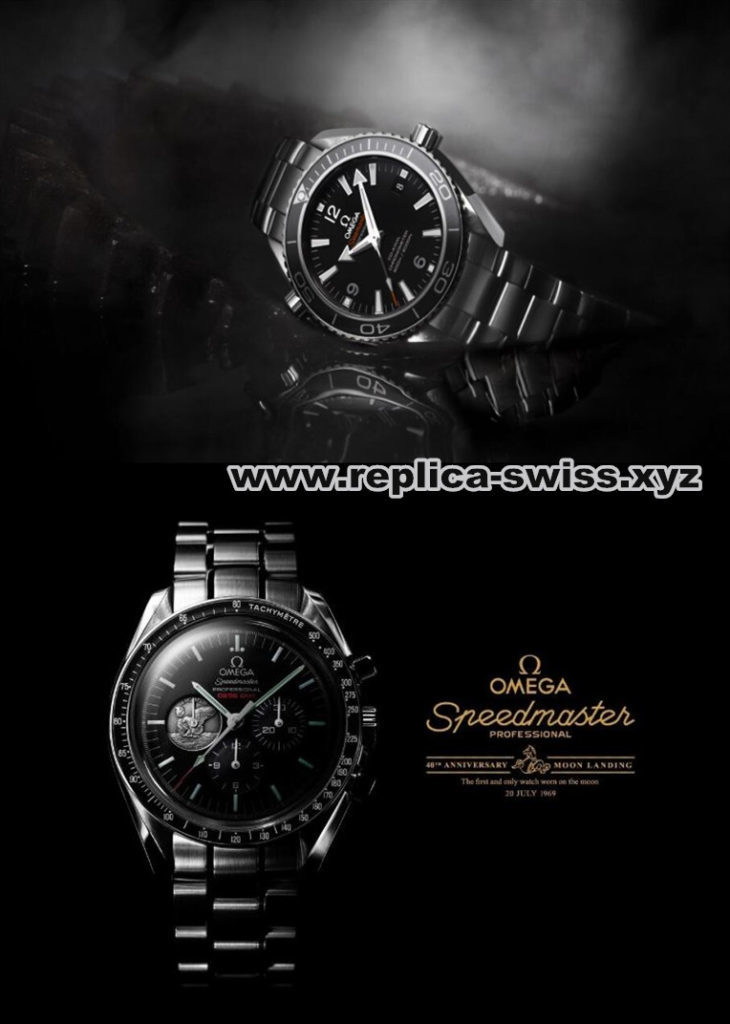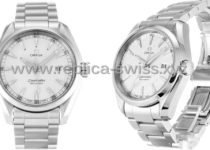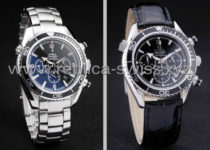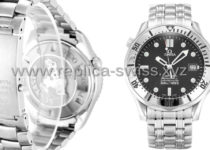How To Maintain Omega Replica Watches? Brand Introduction Of Replica Omega
The service life of an Omega replica watch is related to the wearer’s correct use and maintenance of the clock. For example, wearing a watch while taking a bath, the appearance of the watch is dirty, the length of the uses environment is bad, and the length of the strap is unsuitable and so on, which can easily cause damage to the watch and shorten its service life. The replica Omega watches should be maintained correspondingly every two to three years. Replace the water-resistant components, test the travel performance and movement power consumption, clean the movement, and keep the appearance. Such maintenance services will effectively extend the life of your watch.
Omega replica watch strap care:
1. Avoid contact with moisture and moisture to prevent discoloration and deformation.
2. Avoid long-term exposure of the strap to sunlight to avoid discoloration.
3. The leather strap is comfortable to penetrate and avoid contact with oily substances or cosmetics.
Regular maintenance of Omega replica watches:
1. The mechanical movement is maintained once every 3-5 years.
2. Perform water-proof test and appearance cleaning once a year.
3. This will not only keep the watch in good running condition but also effectively extend its service life. However, the above maintenance service is only applicable to watches under normal wearing conditions and does not include watches under abnormal wearing or continuous impact.

Omega’s symbol is “Ω,” which is an internationally renowned watchmaking company and brand. Founded by Louis Brandt in 1848, Omega marks a glorious achievement in the history of watchmaking. Omega has been a pioneer in the watchmaking industry for more than 150 years with its advanced watchmaking technology.
In the glorious history of more than 150 years, Omega has been playing the role of pioneering watch technology. With a persevering pioneering spirit, he has challenged different fields, from daring to explore the mysteries of space to reach the limits of the ocean. Omega is even more inseparable from the sports industry. With its professional technology, Omega provides timing services for many international authoritative events.
The NASA test is the most rigorous in the world. The purpose is to select a reliable and reliable watch for the astronauts of the Apollo moon landing program, and the Omega Speedmaster professional chronograph is the only one that passed the test. Since then, Omega watches and the human aerospace industry have progressed together. Today, the Omega Speedmaster is still a chronograph approved by NASA.
Omega is also an important role in sports timing. It has made numerous technical breakthroughs, including the world’s first thousandth of a second, the end-point photography device, and the contact pad timing system necessary for all international swimming competitions today, also included in the Nordic Winter Olympics timing service provided by Omega.
The high-quality performance of Omega products is also another manifestation of the brand’s pioneering spirit. For example, the new coaxial escapement device can make Omega watches more reliable and extend the time between repairs. Omega was founded by Louis and Brandt in 1848 and had been creating a glorious history in the watch industry.
The Swiss watch Omega was born in the hands of a 23-year-old. This man was Louis Brandt, a little craftsman. During the long winter in Switzerland, Brandt used the weak light to piece together the parts bought from local craftsmen to make a fashionable pocket watch at the time. Brandt sold his watch in various European countries. Brandt’s two sons, Luis Paul and Caesar, later joined him, provoking heavy responsibility for the family business.
Louis Brandt transformed the company into a watch manufacturing plant, relocating the plant to the Bill region with abundant human resources, abundant resources, and convenient transportation. After moving to the new address, Brandt took the lead in abandoning the old manual assembly system and started mass production of standardized parts. The assembly is precise and accurate and is considered by the industry to be an affordable work in precision timepieces. Since then, the watch industry has entered an era of mass production, division of labor, and assembly.


